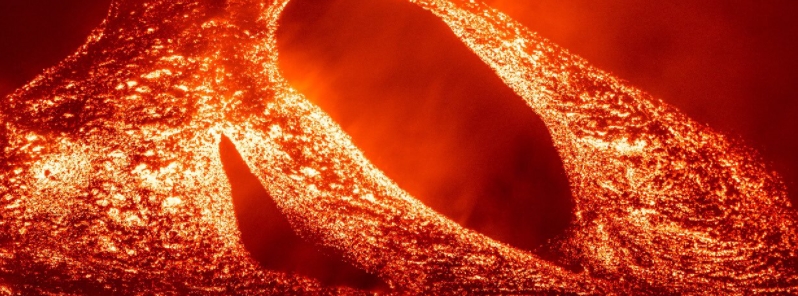High level of activity continues at Pacaya volcano, Guatemala

High level of activity– including strong eruptions, ash emissions, and a new lava flow– continue at Pacaya volcano in Guatemala, the National Coordination System for Disaster Reduction (CONRED) reports. This new phase of increased activity came less than a week after authorities declared the last eruptive phase over, which spanned February 5 to April 23.
Lava flows from the new fissure vent on the northwestern flank of Pacaya's McKenney crater that begun around April 29 remain active and have reached the flatter areas at the base of the cone.
CONRED has been observing explosions of incandescent material from the volcano, and lava flows from the fissure continue its path to the west with a length of 2 100 m (6 900 feet).
Incandescent blocks continue to occur throughout the flow, especially where the slope is greater, the National Institute of Seismology, Volcanology, Meteorology, and Hydrology (INSIVUMEH) eported.
Seismic networks register internal tremors around the volcano due to the movement of magma, as well as periods of degassing in the crater.
"CONRED, [along with] the Volcano Prevention Unit, Immediate Response Teams -ERI- and Departmental and Regional Delegates, maintains attention to the Pacaya volcano, to develop the corresponding actions for the activity that it presents," the national disaster agency wrote.
May 5, 2021, ~ Fissure Changes ~ Volcan De Pacaya, Guatemala #volcano #pacaya #guatemala #fissure
05:02 AM. Thank you to CONRED: https://t.co/NBlBnmCJmF pic.twitter.com/lbRP990P10— Volcano Time-Lapse (@DavidHe11952876) May 5, 2021
Foi observada uma movimentação próximo a fissura do Vulcão Pacaya na Guatemala, ontem 5 de Maio. #ElPatrocinio #Pacaya #Guatemala #URGENTE #ULTIMAHORA #volcano #volcan #news #lavaflow #VolcandePacaya #volcanesyterremotos #Noticias #ALERT #NOTICIA #MayDay #mayo #Alerta #Urgent pic.twitter.com/el2XGypkV1
— Universo News1 (@UniversoNews1) May 6, 2021
VOLCÁN DE PACAYA. Flujo de lava que desciende al flanco suroeste con una longitud aproximada de 1,700 metros. pic.twitter.com/ua4X8g0Rxs
— CONRED (@ConredGuatemala) May 1, 2021
#VolcánDePacaya mantiene flujo de lava desde la fisura en el flanco noroeste que avanza lentamente en dirección oeste a la finca La Breña. Presenta una longitud de dos mil 75 metros aproximadamente.
Vía: @ConredGuatemala. pic.twitter.com/9zH6oa3GS0
— AGN (@AGN_noticias) May 3, 2021
#VolcánDePacaya. El flujo de lava del flanco NorEste continua su avance en dirección Oeste y SurOeste, en el área conocida como La Breña.
Gracias por seguir las redes sociales de @PampichiNews para estar informándose. pic.twitter.com/OuahbnWUb6— PampichiNews (@PampichiNews) May 1, 2021
Geological summary
Eruptions from Pacaya, one of Guatemala's most active volcanoes, are frequently visible from Guatemala City, the nation's capital.
This complex basaltic volcano was constructed just outside the southern topographic rim of the 14 x 16 km (8.7 x 9.9 miles) Pleistocene Amatitlán caldera. A cluster of dacitic lava domes occupies the southern caldera floor.
The post-caldera Pacaya massif includes the ancestral Pacaya Viejo and Cerro Grande stratovolcanoes and the currently active Mackenney stratovolcano.
The collapse of Pacaya Viejo between 600 and 1 500 years ago produced a debris-avalanche deposit that extends 25 km (15 miles) onto the Pacific coastal plain and left an arcuate somma rim inside which the modern Pacaya volcano (Mackenney cone) grew.
A subsidiary crater, Cerro Chino, was constructed on the NW somma rim and was last active in the 19th century.
During the past several decades, activity has consisted of frequent strombolian eruptions with intermittent lava flow extrusion that has partially filled in the caldera moat and armored the flanks of Mackenney cone, punctuated by occasional larger explosive eruptions that partially destroy the summit of the growing young stratovolcano. (GVP)
Featured image credit: CONRED

Commenting rules and guidelines
We value the thoughts and opinions of our readers and welcome healthy discussions on our website. In order to maintain a respectful and positive community, we ask that all commenters follow these rules.